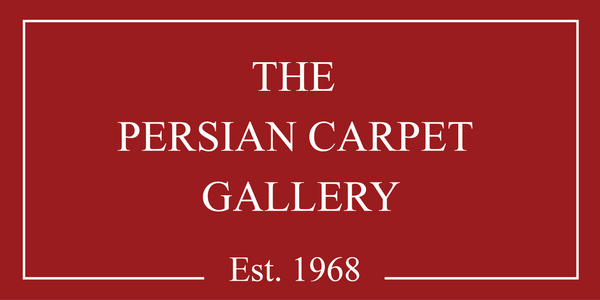Blogs
17th-Century Medallion Carpet - Österreichisches Museum für angewandte Kunst in Vienna
The 17th-century Medallion Carpet from Northwest Persia, housed in the Österreichisches Museum für angewandte Kunst, Vienna, is a masterpiece of Persian weaving. Measuring 635 x 330 cm, it features an intricate medallion designwith floral and animal motifs, including lions, oxen, hares, dogs, ducks, and peacocks. Crafted with a Persian knot technique, it boasts 303,800 knots per square meter, using unbleached cotton warp, red wool double weft, and a wool pile. The symmetrical composition, rich symbolism, and masterful craftsmanship make it a historically significant Persian rug, showcasing the elegance and artistry of traditional Persian carpet weaving.
Floral Mashhad Carpet in Museo Poldi-Pezzoli, Milan
This exquisite late 16th-century Persian carpet, now housed in the Museo Poldi-Pezzoli in Milan, exemplifies the artistic excellence of the Safavid era. Originating from East Persia, it features a dense Persian knot count of 410,000 knots per square meter and a rich wool pile.
While Herat was historically considered the primary hub of carpet weaving in Khorasan, the sacred city of Mashhad also played a significant role. As a major pilgrimage center, Mashhad fostered a thriving carpet industry, supported by offerings made at its holy shrines.
The carpet's design is a breathtaking display of floral motifs, intricate arabesques, and stylized palmettes, arranged in an organic, asymmetrical pattern. These elements extend into the wide border, creating a sense of movement and depth. This masterpiece remains a testament to the enduring beauty and cultural significance of Persian weaving.
The Majestic Hunting Carpet of the Österreichisches Museum
The Hunting Carpet, woven in the Imperial Factory of Central Persia in the 16th century, is a breathtaking example of Persian craftsmanship. Now housed in the Österreichisches Museum für angewandte Kunst (MAK) in Vienna, this luxurious silk carpet features an extraordinary 1,274,000 knots per square meter, making it one of the most finely woven carpets in history.
Its intricate design showcases a central star motif, surrounded by floral patterns, mythical creatures, and an elaborate hunting scene. Persian noblemen, armed with bows, lances, sabers, and clubs, pursue 157 wild animals, including lions, panthers, antelopes, and boars, all set against a rich salmon-colored background. The border features a frieze of flowers, birds, and human figures, symbolizing continuity and tradition.
Believed to be crafted during the reign of Shah Tahmasp I (1524–1576) and designed by Sultan Mohammed, the carpet was possibly taken as booty by Holy Roman Emperor Leopold I after the failed Siege of Vienna in 1683. Its exquisite craftsmanship and historical significance make it one of the world's most celebrated Persian carpets.
All-Over Animal and Floral Carpet at the Österreichisches Museum für angewandte Kunst, Vienna
This magnificent Persian carpet, crafted in Central Persia during the mid-16th century, is a highlight of the Österreichisches Museum für angewandte Kunst (MAK) in Vienna. Measuring 760 x 325 cm, it features an impressive knot density of 495,000 knots per square meter, woven with silk warp, silk weft, and wool pile.
The design is divided into four identical sections filled with elegant arabesques, cloud bands, and lush floral patterns. Among the intricate foliage, fierce confrontations between animals—lions, tigers, antelopes, and more—are vividly depicted, symbolizing nature’s beauty and chaos.
This carpet stands as a remarkable example of Persian craftsmanship, reflecting the artistic sophistication of the Safavid era and continuing to captivate art enthusiasts around the world.
The National Gallery of Art, Washington, D.C. The Medallion and Animal Rug
Originating from North-West Persia in the mid-16th century, this exquisite Safavid-era carpet is a testament to Persian artistry. Measuring 427 x 229 cm, it features a high knot density of approximately 300,000 knots per square meter, woven with wool and cotton.
The design centers on a symmetrical medallion adorned with cloud bands, surrounded by intricate depictions of animals—some real, others mythical, like deer-dragon hybrids. Floral and arabesque motifs enrich the design, while the wide border frames the piece with elaborate patterns.
Renowned for its craftsmanship and detail, this carpet exemplifies the Safavid golden age, where rugs symbolized status and refinement. Now part of the National Gallery of Art, Washington, D.C., it remains a stunning cultural artifact and a masterpiece of Persian textile artistry.
The Ardebil Rug
The Ardebil Carpet, dating back to 1539, is one of the most celebrated examples of Persian art, traditionally believed to have originated from the mosque at Ardebil, the resting place of Sheikh Safi al-Din and Shah Ismail I. It is a medallion-style carpet with intricate designs and inscribed verses by the poet Hafiz. The carpet was likely created under the supervision of Maqsud of Kashan, a prominent carpet maker of the time. Despite some uncertainty about its exact origin, the carpet’s beauty and craftsmanship have made it a revered piece in the Victoria and Albert Museum’s collection. It remains one of the greatest carpets ever created, showcasing the splendor of Persian weaving traditions.
“Garden” Carpet: A Masterpiece of Persian Artistry
The “Garden” carpet, originating from northwest Persia in the early 16th century, is the earliest known example of the garden design. Likely crafted in Heriz, it features a vibrant layout of canals with fish, ducks, medallions adorned with birds, deer, and blossoms, all framed by a floral border. Woven with wool, cotton, and silk, it boasts intricate craftsmanship with 307,200 knots per square meter. This historic masterpiece, once part of the Figdor Collection, now resides in the Österreichisches Museum für angewandte Kunst in Vienna.








